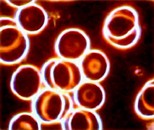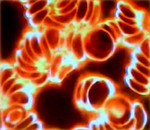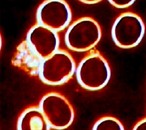Radar speed traps - the curse of the motorist, but how dangerous is the radiation trap in your car.
French cardiologist warns of DVT dangers in car drivers – Swiss research implicates low-frequency electromagnetic fields as culprit.
It can be concluded from several recent scientific studies that motoring can be extremely dangerous to health due to exposure to high levels of harmful low-frequency electromagnetic fields (EMF). Deep-vein thrombosis (DVT) can occur when the legs are constricted. Clots form in veins in the lower leg. Within hours of forming, these clots are liable to fragment and travel around the body. They can lodge in the lung, heart or brain with potentially fatal results.
“Anyone who remains immobile in a confined space for that length of time risks 'economy-class syndrome”, warns French cardiologist Dr. Emile Ferrari. His report prompted calls from road safety campaigners yesterday for urgent research into the link between driving and DVT. (mailonline reported 17/2/2014)
So far, no specific studies have been carried out on the effects on health of magnetic fields in cars and hybrid cars. However, research by Dr. Emile Ferrari found that in a case-controlled study of 160 patients admitted to hospital for DVT, almost 25% had recently completed a journey of more than four hours – the vast majority by car. Similarly, research from the American College of Chest Physicians indicated 39 of the 160 patients had had a history of travel in the four weeks preceding their illness – most (28) had journeyed by car, with nine travelling by plane, and two by train. The DVT patients were almost four times as likely to have had a long trip in the past month, compared with a control group.
Jonathan Simpson, Parliamentary Affairs Manager for the RAC Foundation said, “Travelling for long periods of time on any form of transport can bring health risks. “Although research on the effects of DVT on motorists is still in its early stages there have been cases of elderly passengers on coaches suffering from this. “Motorists need to get into the habit of taking regular breaks when driving long distances to avoid the threat of DVT, particularly if they are predisposed to blood clots.”
More evidence from research recently carried out by the Swiss Federal Office of Public Health, found the main sources of EMF to be magnetised steel belts in the tyres, which generate a low-frequency magnetic field when the car is moving. The ignition, alternator, air conditioning system, Sat Nav, radio, etc., along with between 4,000 to 8,000 metres of cable, also produce magnetic fields inside the car. The result is a tremendous concentration of harmful EMF in a tiny area.
This research also revealed that, in an average mid-class car travelling at 50 mph, magnetic fields in the passenger's foot well measured between 1 and 6 microtesla (μT). In comparison, inside a house, electrical equipment and power cables generate magnetic fields that are, in the order of, 0.005 to 0.1 microtesla.
What, in fact, are the dangers to health from low-frequency EMF?
Complex electrical signaling controls all of the body’s vital functions, keeping us alive. Not only are these tiny electrical impulses generated by chemical reactions within organs such as the heart, the brain and nervous system, but they are also generated by every cell, which has its own physiological electromagnetic field. Perhaps even more importantly, these impulses are fundamental to who we are, to our unique character and personality.
Any disturbance to the body’s natural electromagnetic field is potentially catastrophic. Especially when you consider the following incontrovertible scientific fact: some forms of EMF are so powerful that their waves carry sufficient energy to actually break down molecular bonds. It is generally acknowledged that low-frequency electric and magnetic fields induce circulating currents within the human body. Furthermore, if sufficiently large, these currents could affect biological processes. So it’s not disputed that certain levels of EMF can trigger biological effects.
It is scientifically acknowledged that low-frequency magnetic fields can penetrate the body, creating electrical currents which cause a disturbance to the immune system. Once impaired, the immune system does not alert the body to cellular damage, and the need for tissue repair, which would ultimately lead to disease and ill-health.
The ICNIRP comprehensive assessment of the health impacts of low-frequency magnetic fields concludes that long-term exposure to 50 Hz magnetic fields of more than 0.4 μT may double the risk of childhood leukaemia. On the basis of the existing, but limited, evidence for an increased risk of childhood leukaemia, the International Agency for Research on Cancer (IARC) has classified low-frequency magnetic fields as possibly carcinogenic. It is not yet possible to estimate to what extent the rather brief, low frequency magnetic fields in cars and hybrid cars contribute to such a medium-level exposure.
So is there an answer?
Yes there is and it comes in the form of credit card-sized device that fits on to the vehicle’s battery. The technology captured in this device helps to neutralize the harmful frequency emitted from low-frequency electromagnetic fields. To investigate the impact of electronic and environmental stressors on a driver, dark field microscopy was used to demonstrate the effects on the driver’s blood cells. Each field was assessed for what is known as “rouleaux formation”. This is a property of erythrocytes (red blood cells), which causes them to ‘clump’ together, forming long chains as a result of their discoid shape.
One of the striking differences between these samples is the degree of rouleaux formation that occurs after exposure to EMF. When the red blood cells clump together the oxygen-carrying capacity of the blood is reduced. The tiny capillaries in the body are about the diameter of one red blood cell, and the rouleaux have difficulty in flowing through these minute vessels. Another reason that cells can be short of vital oxygen! No wonder we feel tired after a long drive. But, more worryingly, could this be the first step in the formation of DVT?
Oxidative stress was also evaluated, based upon the characteristic of the rouleaux formation. Lastly, the final important parameter that was measured were the number of neutrophil granulocytes (the most abundant type of white blood cell forming an essential part of the innate immune system) in the entire sample, in order to evaluate any possible influence on the human immune system.
In the first image below, the blood sample shows the subject’s blood before the first test drive.
The next image shows the blood sample of the subject’s blood immediately after the first test drive, without the device fitted.
The final image shows the result of a following test drive, except this time a device was installed onto the battery of the car. The results here are very clear and profound. No oxidative stress was found and the rouleaux formation has also disappeared. The cells themselves show smoothed and well-rounded cell shapes. As a result, the flowability of the blood allows greater transport of oxygen to the tissues and cells of the body, thereby reducing fatigue and enhancing the concentration and attentiveness of the driver and any passengers.



For further academic research on the harmful effects of electromagnetic fields click on EMF protection and for EMF protective devices under Products section.
Reference sources:
Cars, hydrid cars - Swiss Federal Office of Public Health. http://www.bag.admin.ch/themen/strahlung/00053/00673/02377/?lang=en
Travel as a risk factor for venous thromboembolic disease. http://journal.publications.chestnet.org/pdfaccess.ashx?ResourceID=2095359&PDFSource=13
Extremely low-frequency electromagnetic fields cause DNA strand breaks in normal cells. http://www.ncbi.nlm.nih.gov/pubmed/24401758
http://www.emfs.info/Sources+of+EMFs/transport/cars/
http://www.dailymail.co.uk/health/article-132349/DVT-danger-cars.html
Back to news